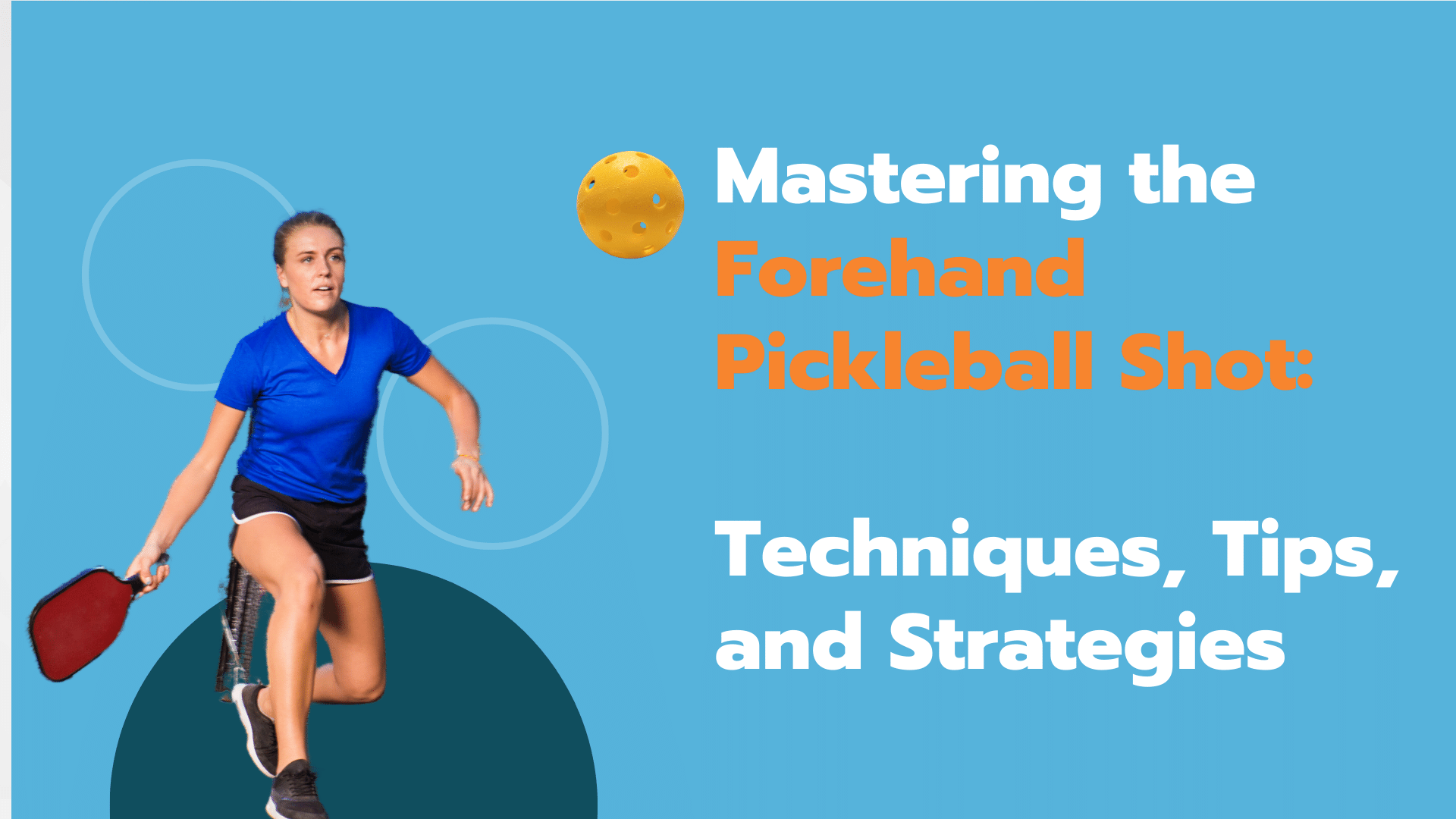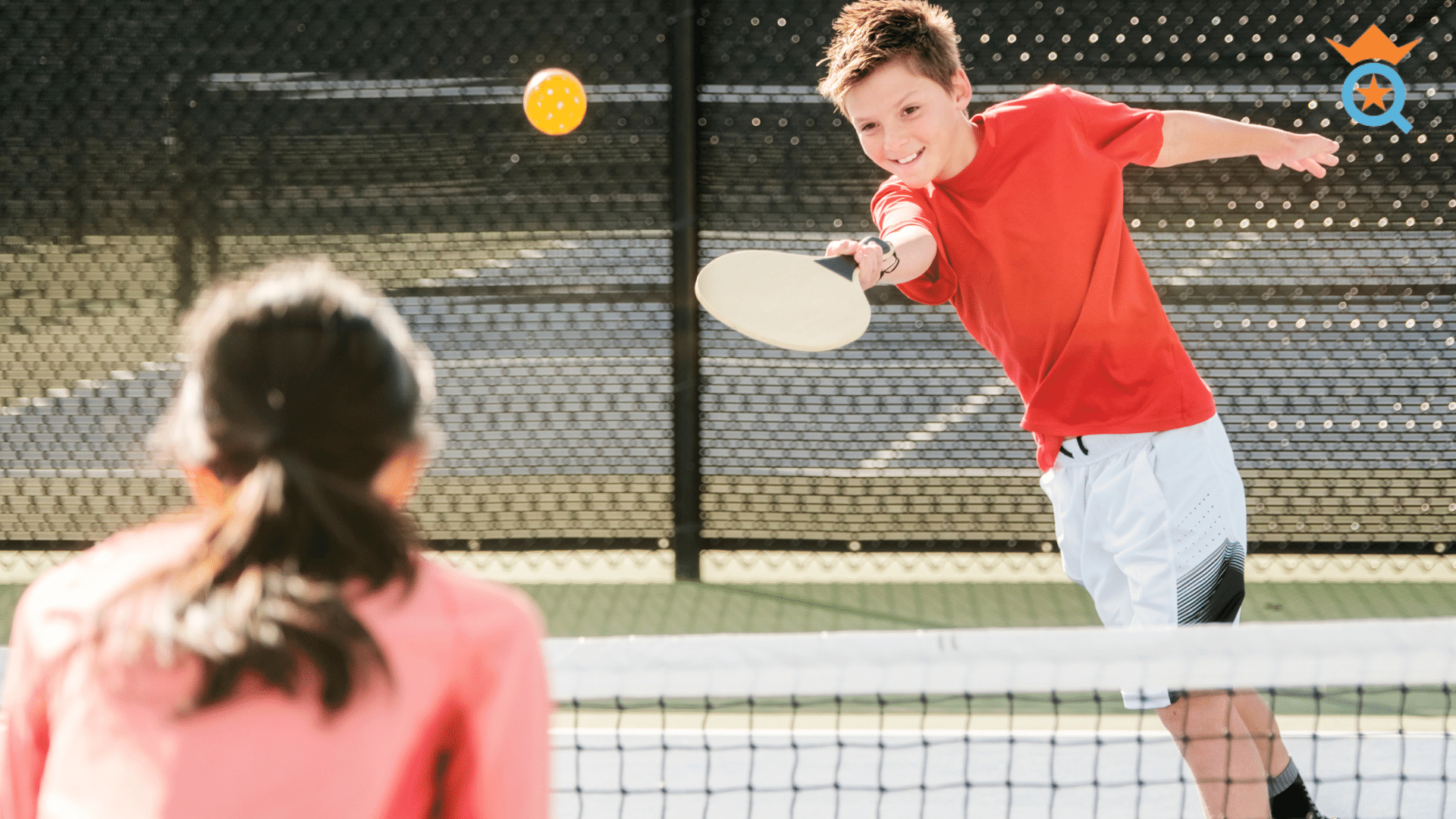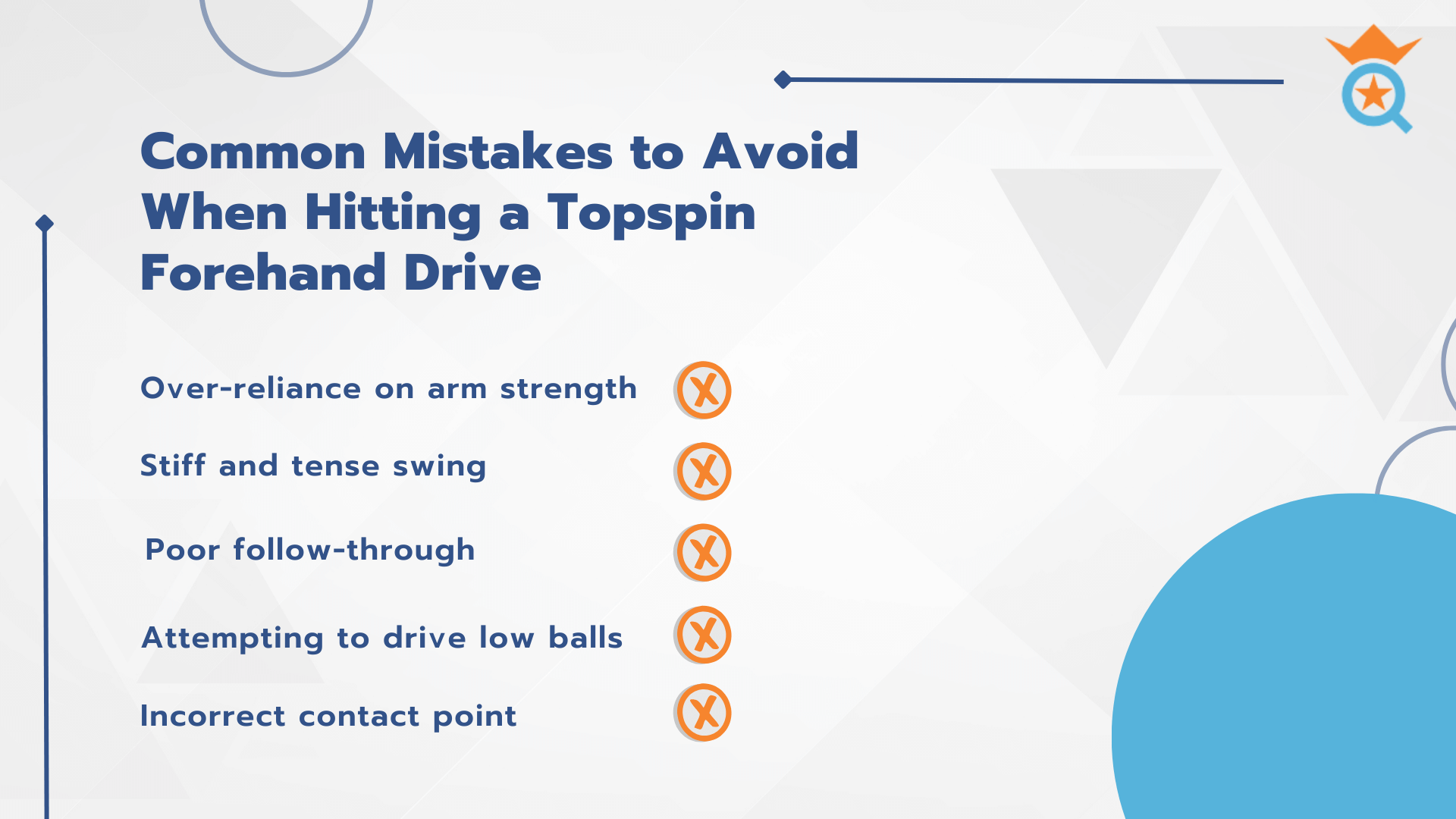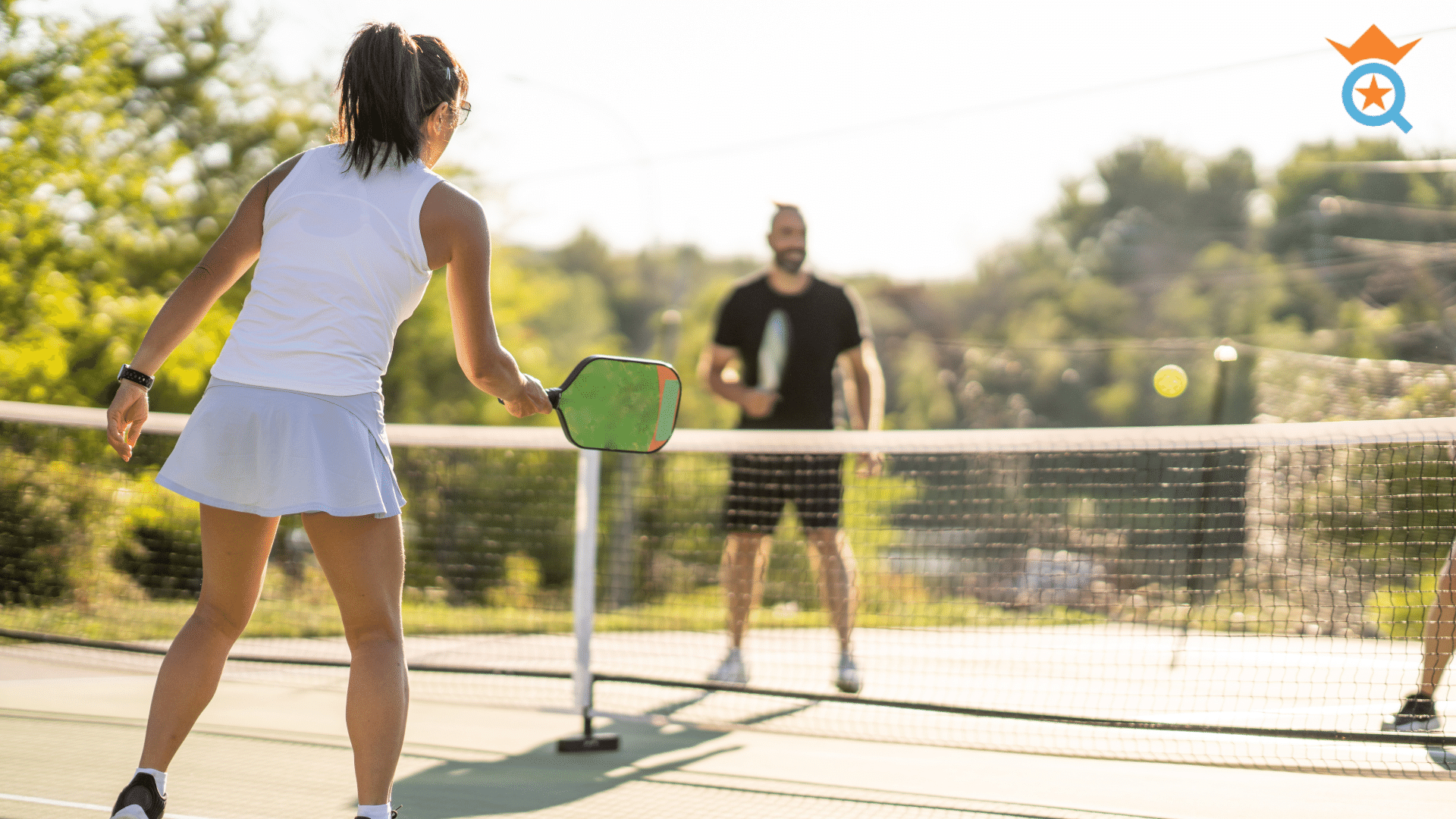Are you ready to elevate your game to new heights and leave your opponents in awe? The topspin forehand is an essential weapon in any pickleball player's arsenal, and mastering it can make you an unstoppable force on the court. This powerful shot offers impressive accuracy and control, allowing you to dominate rallies and dictate the pace of the game.
In this comprehensive guide, we will reveal the secrets of the topspin forehand, from perfecting your grip to executing the impeccable technique. Get ready to unleash your full potential and become the ultimate pickleball champion!

The Importance of a Powerful Topspin Forehand in Pickleball
A powerful topspin forehand in pickleball can be a game-changer, providing you with a multitude of advantages in various game situations.
Whether you're returning a serve, targeting opponents in transition zones, or attempting a passing shot in singles, a well-executed topspin forehand can make all the difference.
This versatile shot not only allows you to generate pace and depth but also helps you apply pressure on your opponents, forcing them to make errors or adopt defensive strategies.
By incorporating a powerful topspin forehand into your skillset, you become a more unpredictable player, keeping your opponents guessing and preventing them from settling into a rhythm.
Ultimately, mastering the topspin forehand will elevate your overall performance, making you a formidable force on the pickleball court.

Grips for the Perfect Pickleball Forehand
To execute an impeccable topspin forehand in pickleball, the right grip is crucial. Here, we will explore the Eastern Forehand Grip and the Semi-Western Forehand Grip, along with their benefits and suitability for topspin shots. We will also briefly touch upon the Continental Grip used for other shots in pickleball.
Eastern Forehand Grip
The Eastern Forehand Grip involves placing the base knuckle of your index finger on the third bevel of the paddle handle. This grip allows your palm to rest behind the paddle, providing a strong and stable base for your shots. The Eastern Grip is ideal for topspin forehands because it enables you to generate power and spin with ease, while also offering a natural and comfortable feel.
Semi-Western Forehand Grip
The Semi-Western Forehand Grip is obtained by positioning the base knuckle of your index finger on the fourth bevel of the paddle handle. With this grip, the paddle face is more constricted, allowing you to produce even more topspin with your shots. Aggressive players who favor heavier spin and higher net clearance should use the semi-western grip.
Continental Grip: A Brief Mention
The Continental Grip, characterized by placing the base knuckle of your index finger on the second bevel of the paddle handle, is commonly used for various shots in pickleball, such as serves, volleys, and dinks. Although this grip offers versatility for different strokes, it is not the most effective choice for hitting a powerful topspin forehand due to the paddle face's more open position.
Both the Eastern and Semi-Western Forehand Grips offer unique benefits for executing topspin forehand shots in pickleball. The choice between the two grips ultimately depends on your playing style and personal preferences.
Technique: How to Execute a Topspin Forehand Drive in Pickleball
Mastering the topspin forehand drive in pickleball requires a solid understanding of the proper technique.
Let's break down the steps involved in executing this powerful shot, highlighting early preparation, body positioning, weight transfer, contact point, follow-through, and generating topspin.
- Early Preparation: As soon as you recognize that the ball is coming to your forehand side, pivot on your back foot and rotate your hips and shoulders to face the net. This early preparation allows you to react quickly and efficiently to the incoming ball.
- Body Positioning: Stand sideways to the net, with your non-dominant foot forward (left foot for right-handed players) and your knees slightly bent. Maintain an athletic stance with your weight evenly distributed between both feet.
- Weight Transfer: As you initiate your swing, shift your weight from your back foot to your front foot. This transfer of weight helps generate power and momentum for your shot.
- Paddle Position: Bring your paddle back with the face pointing slightly downward. Your non-dominant hand should be pointing toward the incoming ball to help maintain proper balance and alignment.
- Contact Point: Strike the ball in front of your body, ideally when it is between waist and chest height. This optimal contact point allows you to generate the most power and spin on your shot.
- Generating Topspin: Brush the back of the ball in a low-to-high motion as you make contact, with the paddle moving from below the ball to above it. This upward brushing motion imparts topspin on the ball, allowing for greater control and consistency in your shots.
- Follow-Through: After contact, extend your arm forward and upward, finishing with your paddle above your shoulder. This follow-through motion ensures that you maintain control, spin, and power throughout the entire swing.
By following these steps and focusing on early preparation, proper body positioning, weight transfer, contact point, and follow-through, you will be well on your way to mastering the topspin forehand drive in pickleball. Keep practicing and refining your technique, and soon you'll be a formidable force on the court.
Common Mistakes to Avoid When Hitting a Topspin Forehand Drive
Avoiding common pitfalls when hitting a topspin forehand drive in pickleball is crucial for executing effective shots. Here, we outline several mistakes to watch out for and offer tips on how to overcome them and improve your overall technique.

Over-reliance on arm strength
Mistake: Relying solely on your arm to generate power can lead to an inconsistent and weak shot.
Solution: Focus on using your entire body to generate power, including your hips, legs, and core. Ensure that your body rotates through the shot, allowing your arm to naturally follow along.
Stiff and tense swing
Mistake: A rigid or tense swing can limit your range of motion and reduce the effectiveness of your shot.
Solution: Maintain a relaxed grip and loose arm throughout the swing. This will allow for a more fluid motion, resulting in better control, power, and spin.
Poor follow-through
Mistake: Cutting your swing short or not following through can hinder your ability to generate power and topspin.
Solution: Ensure you have a complete follow-through, with your paddle finishing above your shoulder. This will help generate the necessary power and spin for an effective shot.
Attempting to drive low balls
Mistake: Trying to drive balls that are too low can lead to hitting the net or sending the ball out of bounds.
Solution: Aim to drive balls that are waist-level or higher, allowing for a more controlled and accurate shot.
Incorrect contact point
Mistake: Hitting the ball too early or too late can result in a weak shot with limited control.
Solution: Focus on striking the ball in front of your body, between waist and chest height. This optimal contact point will allow you to generate the most power and spin on your shot.
By recognizing and addressing these common mistakes, you can improve your topspin forehand drive technique and become a more consistent and effective player on the pickleball court. Practice and persistence are key; keep working on your form, and you'll see improvements over time.
Variations and Other Forehand Shots in Pickleball
In addition to the topspin forehand drive, several other forehand shots can enhance a player's skill set and complement their game. Understanding the different variations and incorporating them into your arsenal can make you a more versatile and unpredictable player.
Let's briefly discuss the two-handed forehand, inside-out forehand, and forehand slice, and their roles in pickleball.
Two-handed Forehand
The two-handed forehand is a shot where the player uses both hands on the paddle, similar to a two-handed backhand. This shot provides extra stability, control, and power, particularly for those who struggle with generating power using a one-handed forehand. While less common in pickleball, the two-handed forehand can be useful for players transitioning from tennis or those who feel more comfortable with additional support from their non-dominant hand.
Inside-Out Forehand
The inside-out forehand is a shot where the player hits the ball from the backhand side of their body, but with a forehand stroke. This shot is particularly effective when looking to create sharp angles or catch opponents off-guard by changing the direction of the ball. By mastering the inside-out forehand, players can maintain an aggressive position on the court and exploit openings in their opponent's defense.
Forehand Slice
The forehand slice is a shot where the player imparts a backspin on the ball by contacting it with a downward, slicing motion. This shot can be used as a defensive tactic to disrupt the rhythm of an opponent or as an offensive strategy to create a low, skidding ball that is difficult for opponents to return. A well-executed forehand slice can complement a player's topspin forehand by providing an alternative shot that keeps opponents guessing.
You can enhance your skill set and increase your versatility on the pickleball court by implementing these several forehand stroke variants into your game. To perfect these strokes and combine them effortlessly with your forehand topspin, practice and experimentation are necessary.

Strategies for Targeting Opponents with Your Topspin Forehand
To maximize the effectiveness of your topspin forehand drive, it's essential to develop strategies for targeting your opponents based on the specific situation. By focusing on their weaknesses, exploiting gaps, and creating opportunities, you can improve your overall performance on the pickleball court.
1. Targeting opponents' weaknesses
Take note of your opponent's weaker side, typically their backhand, and aim your topspin forehand drives in that direction. This strategy can force them into uncomfortable shots or unforced errors, providing you with an advantage during the rally.
2. Exploiting gaps between opponents
Keep an eye on the positioning of your opponents and identify gaps or spaces between them. When you spot a gap, use your topspin forehand drive to hit the ball into that area, forcing your opponents to scramble or make a difficult return.
3. Attacking opponents in transition
If one or both of your opponents are caught in no man's land (the transition area between the baseline and the non-volley line), aim your topspin forehand drive at their feet. This tactic makes it challenging for them to return the ball and can lead to weak or popped-up shots, setting you up for an easier next shot.
4. Putting pressure on the net player
When one opponent is positioned at the net, target their dominant side hip or shoulder with your topspin forehand drive. This location is often more difficult to defend and can result in weak returns or unforced errors.
5. Hitting deep returns
When returning serve, use your topspin forehand drive to hit the ball deep into your opponent's court. Aiming either down the middle or towards their weaker side will limit their options and give you more time to get into an advantageous position.
6. Changing the pace
Mixing up the speed and spin of your shots keeps your opponents guessing and prevents them from getting comfortable. Alternate between fast-paced topspin forehand drives and slower, spin-heavy shots to disrupt their rhythm and create opportunities for yourself.
Remember to continuously analyze your opponents' weaknesses, adjust your game plan accordingly, and capitalize on the opportunities you create.
Drills and Practice Tips for Developing Your Topspin Forehand in Pickleball
To become proficient in executing a topspin forehand shot, it's crucial to engage in regular drills and practice routines. The following suggestions can help you develop and refine your topspin forehand in pickleball, ultimately making it a reliable weapon on the court.
Wall practice
Find a suitable wall or backboard and practice hitting topspin forehand shots continuously. Focus on maintaining proper form, generating topspin, and achieving a consistent rhythm. This drill will help you develop muscle memory and improve your shot consistency.
Forehand-to-forehand rallies
Partner up with a fellow player and practice hitting forehand to forehand rallies. Start by hitting the ball with a minimal pace and gradually increase the speed and intensity as you become more comfortable. This drill helps you develop control, accuracy, and consistency in your topspin forehand shots.
Target practice
Set up targets on the court, such as cones or empty ball containers, to represent different strategic locations (e.g., opponent's backhand, gaps between opponents, feet of a transitioning opponent). Practice hitting your topspin forehand drive to these targets with varying speed and spin. This drill will enhance your accuracy and shot placement.
Incorporating movement
To simulate real-game situations, incorporate movement into your practice sessions. Have a partner or coach feed you balls while you move laterally or forward and backward on the court. Focus on maintaining proper footwork, balance, and shot execution. This drill will help you become more adept at hitting topspin forehand shots while on the move.
Slow-motion video analysis
Record yourself practicing your topspin forehand and analyze the footage in slow motion. This method allows you to observe your technique, identify areas for improvement, and make adjustments accordingly. Regularly reviewing your form can lead to significant improvements in your shot execution.
Repetition and consistency
Developing a powerful and accurate topspin forehand requires dedication and consistent practice. Allocate time in your practice sessions specifically for working on your topspin forehand and commit to refining your technique through repetition.
By incorporating these drills and practice tips into your routine, you can steadily improve your topspin forehand shot in pickleball. Remember that progress takes time and patience, so stay persistent and keep honing your skills to become a formidable force on the court.
Popularity of the Game
Final Thoughts
Mastering the topspin forehand in pickleball can significantly elevate your game and provide you with a powerful weapon on the court. By investing time and effort into practicing this shot, you can develop the versatility and unpredictability needed to keep your opponents guessing and gain a competitive edge.
Understanding the proper grips, technique, and variations of the forehand shot, as well as recognizing common mistakes and learning to avoid them, will ensure that you're on the right path to perfecting your topspin forehand. Engaging in targeted drills and practice routines will further solidify your skills and increase your proficiency in executing this critical shot.
So, go out there, put in the work, and watch as your topspin forehand transforms into a formidable asset in your pickleball arsenal. Remember that patience and persistence are key to improvement, and with consistent practice, you'll soon find yourself reaching new heights on the pickleball court.

FAQs
What is the role of the left leg in executing a forehand pickleball shot?
In a forehand pickleball shot, the left leg plays a critical role in maintaining balance, generating power, and providing stability during the shot. If you're right-handed, your left leg should be positioned in front of your right leg when you turn sideways to prepare for the shot. This body positioning helps you maintain balance and effectively transfer weight from your back leg to your front leg during the shot execution.
How does a soft game differ from a forehand drive in pickleball?
A soft game in pickleball refers to playing with more finesse and control, using shots like dinks and third-shot drops to keep the ball low and slow. This strategy forces your opponents to hit upwards, making it difficult for them to generate power. On the other hand, a forehand drive is a powerful, aggressive shot that aims to put pressure on your opponents by hitting the ball hard and fast. A well-executed forehand drive can catch your opponents off-guard or force them to make errors in their response.
How does the paddle's forward motion affect a forehand shot drop-in pickleball?
The forward motion of the paddle during a forehand shot drop is essential for generating the desired trajectory and pace. A smooth, controlled paddle forward motion helps create a soft, accurate shot that drops into the opponent's court, ideally near the non-volley zone. This forces your opponents to hit the ball upwards, setting you up for an offensive play.
When should a player step forward during a forehand drive in mid-court in pickleball?
A player should step forward during a forehand drive in mid-court when they see an opportunity to be aggressive and apply pressure on their opponents. Stepping forward allows the player to transfer weight from their back leg to their front leg, generating more power in the shot. Additionally, moving forward helps the player to be in a better position for their next shot, potentially catching their opponents off-guard or forcing them to make errors.
How can a player generate more power in their forehand pickleball shot?
Generating more power in a forehand pickleball shot can be achieved by focusing on proper technique, body positioning, and weight transfer. Players should ensure they have a strong grip, like the Eastern Forehand or Semi-Western Forehand Grip, and maintain good balance throughout the shot. Transferring weight from the back leg to the front leg while leading with the hips and chest will help generate power. Additionally, using a fluid, low-to-high swing path with a proper follow-through will contribute to generating more power in the shot.
What is the purpose of the ready position in pickleball, and how does it relate to the forehand shot?
The ready position in pickleball is a neutral stance that allows players to quickly react and adjust to incoming shots. In the ready position, players hold their paddle in front of their body with a Continental Grip, feet shoulder-width apart, and knees slightly bent. When preparing to execute a forehand shot, players transition from the ready position to a more specialized stance, turning sideways and positioning their dominant hand's leg behind their non-dominant hand's leg. This transition helps them achieve proper balance, weight transfer, and body positioning for an effective forehand shot.
Can you recommend a resource or pickleball channel that provides tips and tutorials for improving forehand shots?
One popular resource for tips and tutorials on improving forehand shots in pickleball is the Pickleball Channel (http://www.pickleballchannel.com/). The Pickleball Channel provides a wealth of instructional videos, drills, and expert advice for players of all skill levels. By exploring the content on the Pickleball Channel, you can learn more about forehand techniques, strategies, and practice routines to help you elevate your forehand game and overall performance on the pickleball court.








